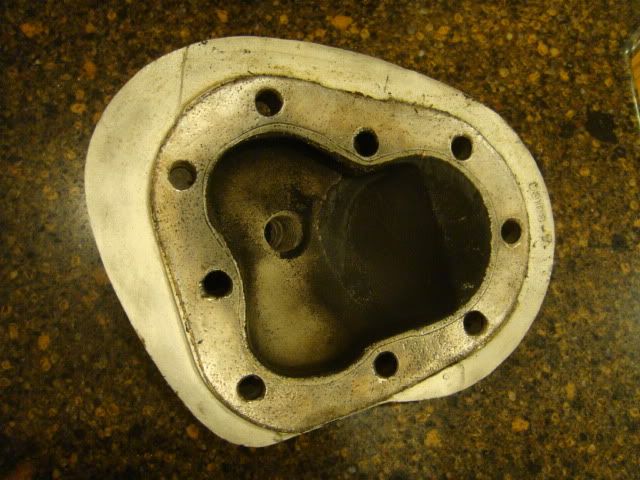Huge waste of time trying to deal with a head in a lathe chuck, and far to risky.
This thread has become funny to me, but, then again, I make money on this stuff and plenty of it.
Oh well, after 41 years of doing it, I get set in my ways, making money that is.
Just so happens, I have a set of Kmodel heads for an engine I am doing, so I walked out to my little home antique engine build shop, and whipped out a set of heads in 38minutes.
The machine is a vintage Moore jigbore. The flathead "Kmodel Harley Davidson" is sitting on a Gorton 15" rotary table, that I like to use for general work to preserve the Moores table.
So, as can be seen in this photo, the head is perched on two screw jacks in front and a steel pin at the rear with clamps at those locations.
Note the short handle wrench to prevent over tightening the clamps, and the level for setting the head true.
The clamps are tightened just enough, so as the head can not be pulled out with two hands. You see, very light cuts are taken, in this case .005" cleaned them up in one cut.
The tool is carbide, and very sharp with a rather small nose radius, in a Moore fly cut head.
Like this-
http://s170.photobucket.com/albums/u265/donsmonarch10ee/?action=view¤t=Kmodelflathead001.jpg
The finished head-
http://s170.photobucket.com/albums/u265/donsmonarch10ee/?action=view¤t=Kmodelflathead002.jpg
It may be of interest to note, that Kmodel heads use no gasket. The recommended seal is a thin layer of aluminum paint, so the heads and cylinder tops need to be pretty flat.
I should add that, I used a lube made of Bees Wax thinned to a grease with Sunnen hone oil, this was smeared on to the heads surface to prevent the rather crappy old aluminum from welding to the cutter, and was cut at 825 rpms.
Now, wasnt it nice of me to actually show something? That is, Rather then just blowing bubbles with others. And, no warp, WOW!






 ).
).